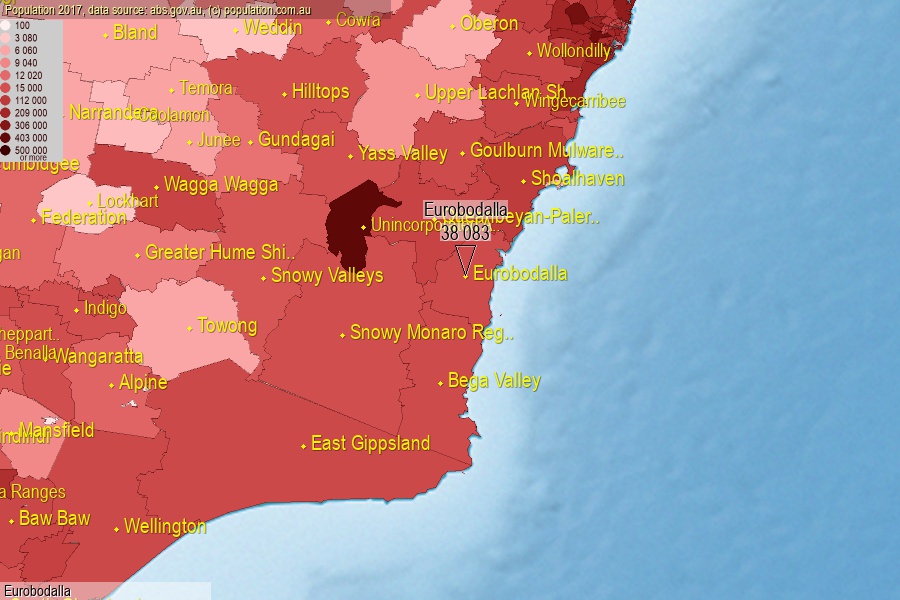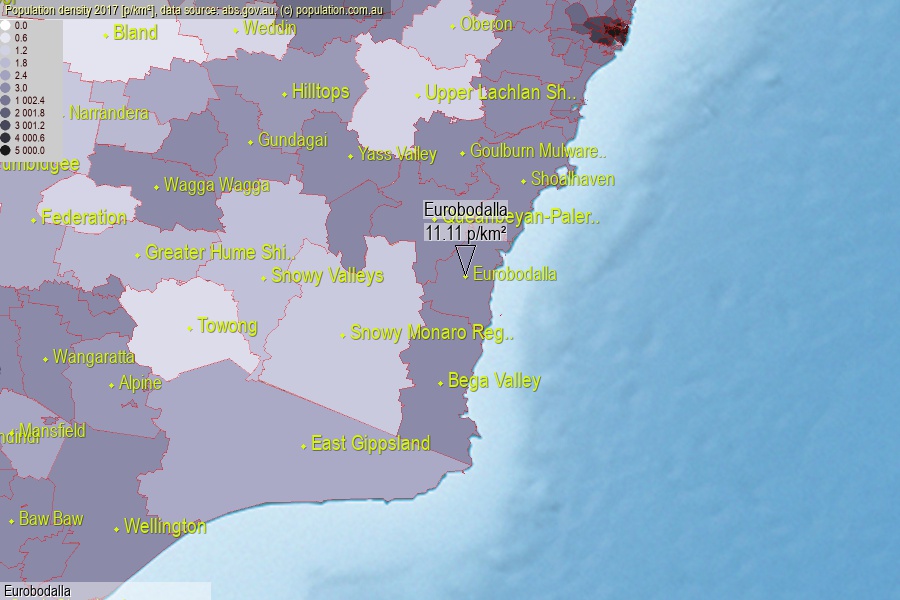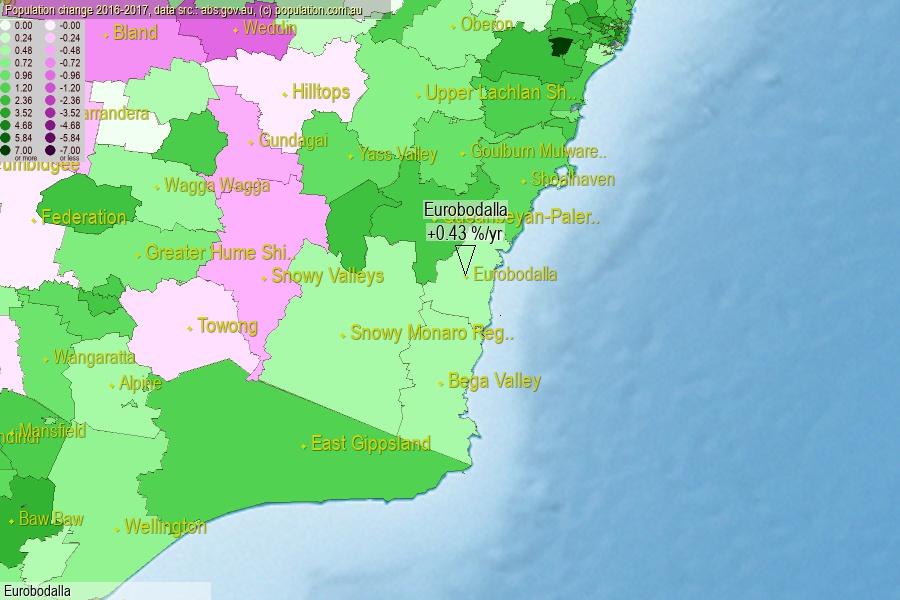 population.com.au
population.com.auLast official estimated population of Eurobodalla Area (as Local Government Area) was 38 083 people (on 2017-06-30)[2]. This was 0.15% of total Australian population and 0.479% of NSW population. Area of Eurobodalla is 3 428.20 km², in this year population density was 11.11 p/km² . If population growth rate would be same as in period 2016-2017 (+0.43%/yr), Eurobodalla population in 2025 would be 39 421. [0]



Click to enlarge. Eurobodalla is located in the center of the images.
Population [people], population density [p./km²] and population change [%/year] [2]
[1996-2001] +2.02 %/Y
[2001-2002] +1.78 %/Y
[2002-2003] +1.80 %/Y
[2003-2004] +1.35 %/Y
[2004-2005] +0.95 %/Y
[2005-2006] +0.54 %/Y
[2006-2007] +0.69 %/Y
[2007-2008] +0.55 %/Y
[2008-2009] +0.44 %/Y
[2009-2010] +0.95 %/Y
[2010-2011] +0.75 %/Y
[2011-2012] +0.16 %/Y
[2012-2013] +0.35 %/Y
[2013-2014] +0.57 %/Y
[2014-2015] +0.67 %/Y
[2015-2016] +0.49 %/Y
[2016-2017] +0.43 %/Y
[0] Calculated with linear interpolation from officially estimated population
[1] Read more about LGA and Australian Statistical Geography Standard (ASGS) on abs.gov.au
[2] Population data from Australian Bureau of Statistics (Population and density: 2017; change: 2016-2017)
[3] Digital Boundaries: Australian Statistical Geography Standard (ASGS) 2016.